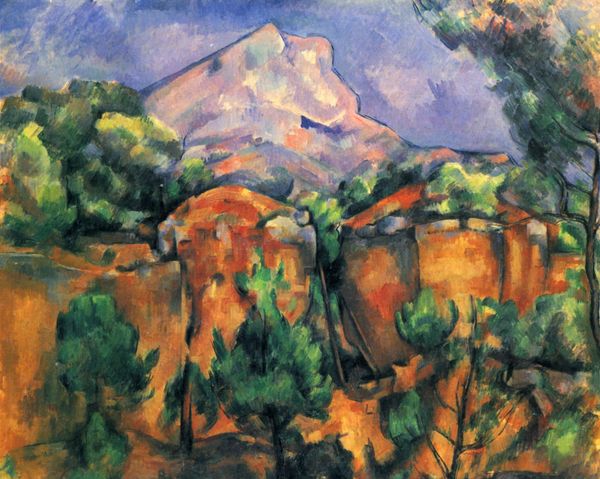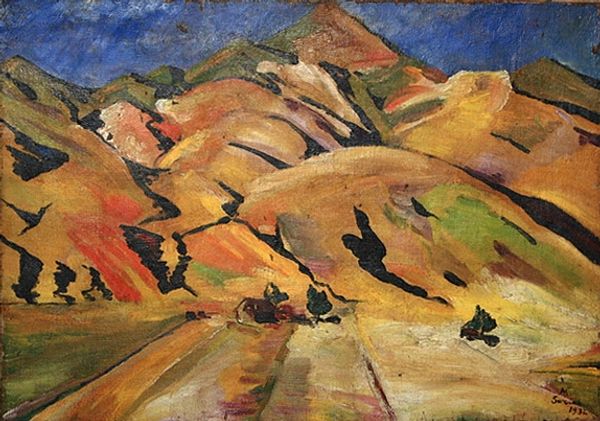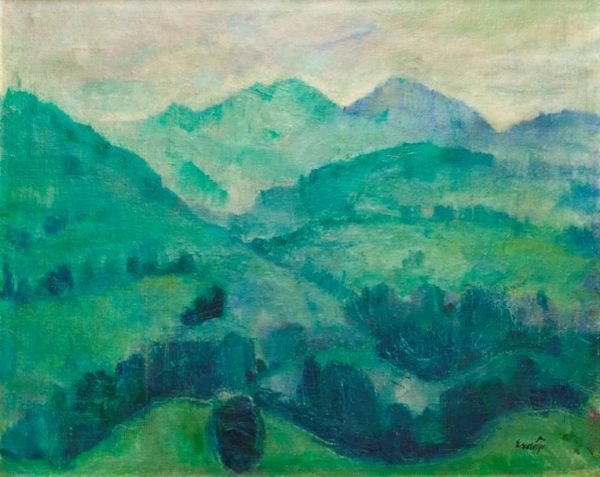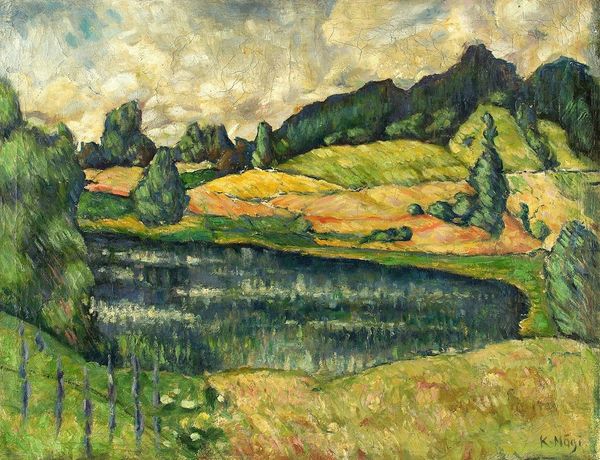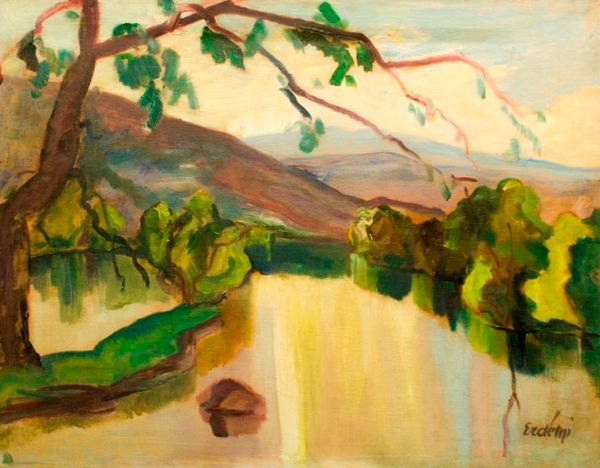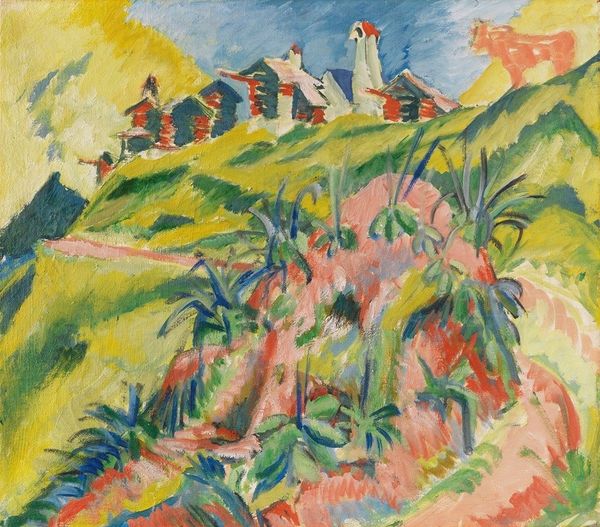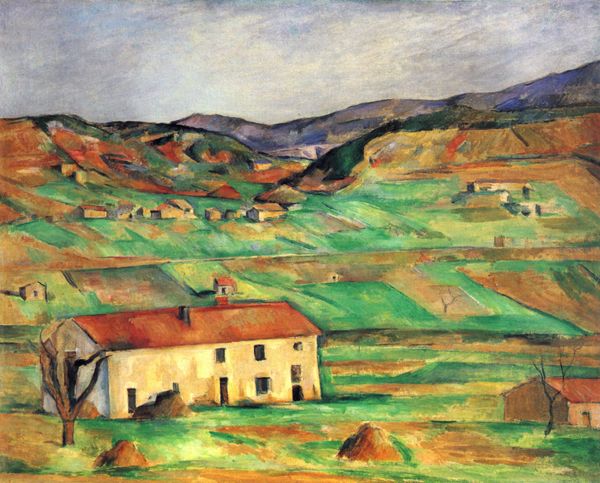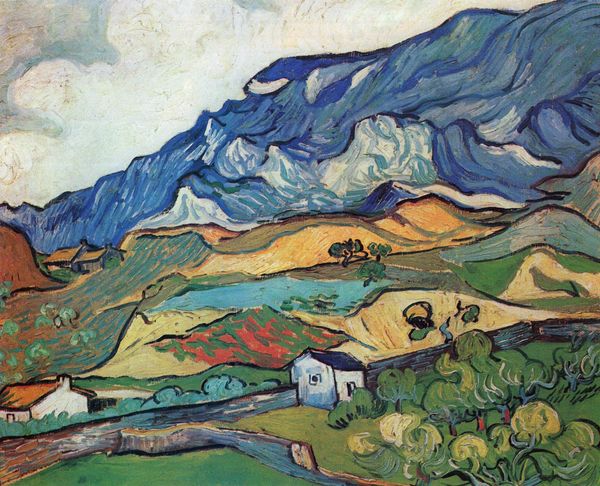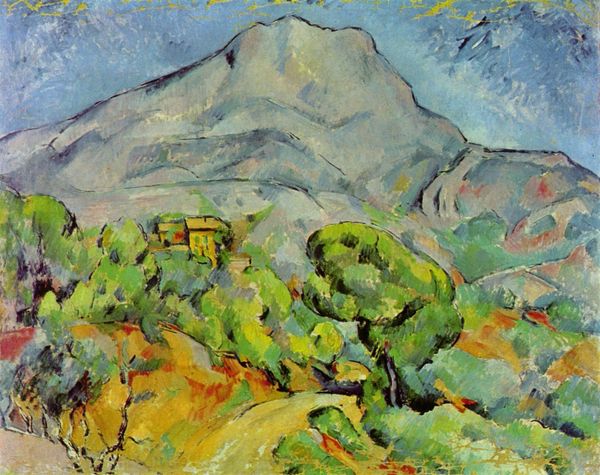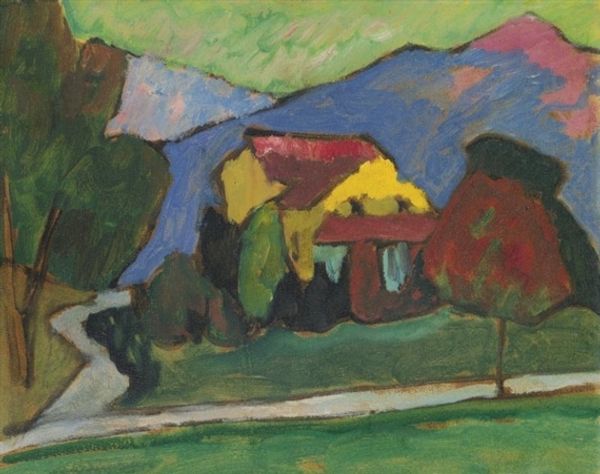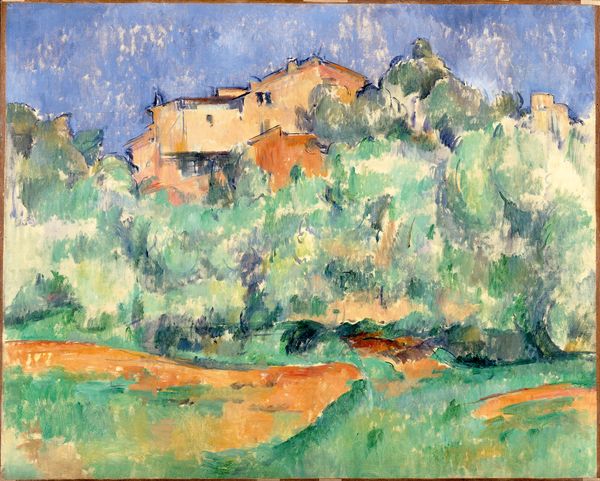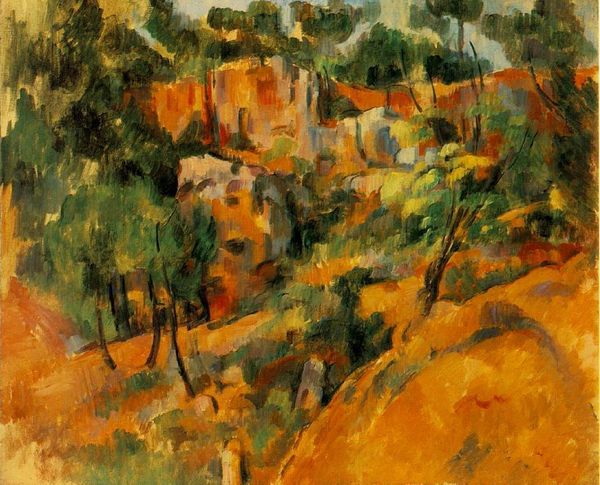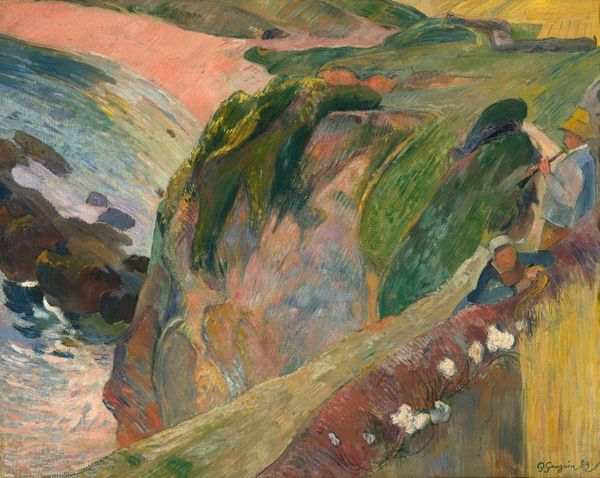
plein-air, oil-paint, impasto
#
fauvism
#
plein-air
#
oil-paint
#
landscape
#
impressionist landscape
#
oil painting
#
impasto
Copyright: Public domain
Curator: Before us hangs Othon Friesz's "Sainte-Victoire Mountain," painted in 1906. This artwork reflects Friesz’s fauvist interpretation of the celebrated Provençal landscape, echoing the themes of his predecessors. Editor: My initial response is quite visceral. The mountain's weighty presence is undeniable, grounded by the rough texture of the impasto application and vibrant hues, yet somehow restless and in motion with short and intense brushstrokes. Curator: Absolutely. Consider the historical context; the Sainte-Victoire held symbolic weight, particularly in Post-Impressionist circles. Cézanne painted it repeatedly. This landscape became emblematic of a modern, uniquely French identity in painting. Editor: And Friesz takes this legacy and injects it with an almost aggressive energy through Fauvist color. The sharp contrast between the cool greens and warm browns is not necessarily true to nature, yet feels utterly truthful in conveying an intense experience of being present in that landscape. The color choices alone serve a crucial structural role. Curator: True, but don’t overlook Friesz's role in the art world beyond aesthetics. He challenged academic art structures by embracing the avant-garde alongside contemporaries like Matisse. This was about redefining the establishment as much as rendering light and form. He also reflects a cultural moment wherein regional identities in France were gaining significant traction. Editor: I agree the Fauvist movement presented such artists a tool through which to convey the subjectivity of experiencing place through pure form and color alone; Sainte-Victoire becomes as much a symbol, laden with pre-existing social baggage, as it becomes the location of experimentation on Friesz’s behalf. Curator: Examining "Sainte-Victoire Mountain" reminds us how artistic movements mirror and actively shape cultural consciousness. Editor: Indeed; by exploring such an intense rendering of landscape, we better reflect on art’s ability to distill place to its very emotive core.
Comments
No comments
Be the first to comment and join the conversation on the ultimate creative platform.
